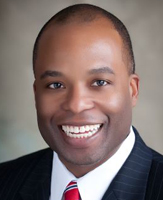2016 Trends: Patient Advocacy, Partnering, And New Technologies Lead The Way

By Ed Miseta, Chief Editor, Clinical Leader

James Gillespie is in an interesting position in the pharmaceutical ecosystem. As CEO of the Center for Healthcare Innovation, he has the opportunity to speak with a lot of executives in the life science sector, including pharma, biotech, and medical device companies. But at the same time he spends a good amount of time interacting with doctors, nurses, and healthcare executives who work with patients in that sector on a daily basis.
“I believe we are truly entering the golden era of healthcare, including clinical trials,” notes Gillespie. “There is so much change afoot that this will truly be an exciting time in the U.S. healthcare system. But with that change we’ll also see a number of challenges the industry will need to overcome.”
Because of his interactions with pharma, doctors, and patients, we asked Dr. Gillespie for his insights on the challenges pharma will face in the coming year.
Ed Miseta: Every pharma company seems to want to become more patient-centric, but I have to think many of them do not have the same definition of what that means.
 James Gillespie: For many companies I think patient centric means patient innovators – actively soliciting new and better ideas from patients. For others it may mean simply engaging with patient advocacy groups. For others it might mean simply being a lot more attuned to what is happening on social media.
James Gillespie: For many companies I think patient centric means patient innovators – actively soliciting new and better ideas from patients. For others it may mean simply engaging with patient advocacy groups. For others it might mean simply being a lot more attuned to what is happening on social media.
Regardless of how we define the term, I think we can all agree there are many things we can do to improve the process. For example, we now see professional patients out there that want to have a voice in protocol design, but will their voice be heard to the exclusion of other patients? Patient advocacy groups are terrific and I interact with many of them, but some sponsors might wonder whether they are fully representative of the patient populations.
So yes, what we mean by putting the patient at the center of trials varies a lot from one sponsor to the next.
Miseta: It seems the patient advocacy position at many companies is new. That means the folks being hired to run it are generally stepping into a whole new world.
Gillespie: Definitely. It is a tough role to step into and the stakes are very high. In many ways I find it to be analogous to the diversity movement currently going on in this country. Initially someone in HR would discuss diversity. Then people were hired to handle it. Then we moved on to inclusion. Finally we got to the point where we were able to tackle engagement. I think we will see something similar on the patient side. It may take five to ten years for some of these individuals to really figure out what this effort will mean to their companies, and even then it will likely be a moving target.
If you think about it, any time there are social, economic, or political pressures mounting to do something, companies will shift resources to it in response. But it still takes a while for these paradigms to emerge.
Miseta: Are we getting closer to having mobile and wearable technologies make a difference in trials?
Gillespie: At this point, I think we are not as close as some may have hoped, and I believe this reflects some of the often understandable conservatism of the FDA and the sponsors. Unfortunately, the adoption of these technologies will continue to be slow going.
But having said that, I would add that the efficacy of some of these technologies has yet to be proven. We have seen an absolute explosion of apps that will help patients with adherence to medicine, but the results on those studies have been very mixed. There are patients who will get them, use them for the first few weeks, and then they stop using them completely. Although some of these apps are cool, will get people’s attention, and even drive investor interest, there is no definitive decision on the ROI they will provide.
To look at a different example, there is a lot of excitement in the industry over using EHRs to recruit patients. But the ROI at the organization level on that has also not been proven, even though having all of these health records in electronic format seems intuitively more efficient and effective. In fact, when EMRs and EHRs are initially adopted, most hospitals are finding they will take a quality hit.
Miseta: Are we seeing any benefits from the advent of genomics?
Gillespie: Right now the industry is still focused on symptoms of the patient. I believe genomics has the potential to change that. In the future, the molecular pathogenesis of the disease is going to become more important, and will result in the growth of numerous diagnostic sub-categories. This is where we see the healthcare and clinical trial pieces coming together. If a patient goes to their doctor and gets diagnosed with certain genetic and metabolic biomarkers, that will not be ignored. We will continue to have traditional clinical scientists and physicians pursuing treatments, but genomics is going to become increasingly important.
That will obviously help drive the growth of personalized medicine, or what might more precisely be called precision medicine. What enables genomics is our ability to process large amounts of data, or what we term Big Data. Analytics and how we process data have absolutely helped the science of genomics develop. But then there is another whole other side to analytics which is looking at hospital and clinical data. While that is entirely separate from genomics, Big Data will be used for that as well. For example, a company recruiting patients could query a large electronic health record system of six million people looking for a particular indication.
Miseta: What else are you hearing on the doctor/patient side?
Gillespie: Drug prices continue to be a concern. We may see margins improve drug prices, but those costs will continue to be an issue. When it comes to costs, healthcare is different than other industries. Usually when a technology improves and proliferates, prices come down. PCs and calculators are good examples. Healthcare is a weird beast in that improving technologies often seem to increase costs. Precision medicine will help patients in many ways, but we also know it is going to be very expensive.
The cost problem is also a structural one. Only around 10 percent of trials finish on time and around 35 percent of the total cost of a trial is simply patient enrollment. That has to change.
But I would add that for all the good that pharma does, and for as large and powerful an industry as it is, it has done a horrible job of presenting its case. There are statistics that show for every dollar spent on drugs, we can often save $50 or more on healthcare costs. The industry seems to be trying to change its image, but the effort is moving surprisingly slow. That basically makes it into a punching bag for others.
Each time a new drug is launched with a very high price that can be a black eye for drug developers. But at the same time we have to look at what the industry has done for rare diseases, and the difference it has made in the lives of people with diseases that were previously neglected. The industry has a good story to tell about rare diseases and orphan drugs but you simply don’t hear it. I would like to see pharma be more proactive and do a better job of communicating its value-add to society.
Miseta: Do you foresee greater collaboration between pharma companies?
Gillespie: I certainly hope we start to see increased collaboration across the healthcare industry. For years we have had teams of healthcare professionals, such as doctors, nurses, and pharmacists, collaborating for patients. Increasingly, it will be in the interest of pharma and CROs to also be a part of these collaborative teams. Certainly a subset of that collaboration will be inter-organizational. In fact, I think these collaborations are one of the most exciting trends occurring in our industry. With initiatives like TransCelerate and PACeR, the number of collaborations between CROs and pharma will continue to grow and get deeper.
Related to that, I also see CROs increasingly participating in risk sharing with pharma. It may just be a matter of time before Pfizer purchases ICON or, going the other way, Quintiles purchases a small biotech firm. Kaiser Permanente is a fully vertically integrated healthcare provider, and I can see that kind of greater integration between pharma and CROs as well. We already have strategic partnerships between these companies, and of course, executives like to identify the synergies and some on Wall Street would react positively to such a move.
And while org level collaboration will be key, ultimately the buck rests with the healthcare team and the doctor specifically. I was recently speaking with a top executive from a large healthcare system and he said when it comes to physicians, their motto is no more cowboys. I think you will see that in clinical trials as well. The solo, free-flying PI physician with huge autonomy is going to be eroded. Increasingly in the clinical trial process, instead of these cowboys you will have teams of professionals working together for a cure or treatment.
